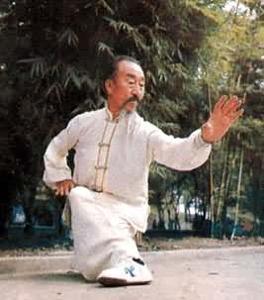Xingyiquan or Form-and-will Boxing
形意拳
Xingyiquan is a kind of quanshu invented by imitating the movements of the animals.
形意拳是一种模仿动物的动作而发明的拳术,
While being practiced, it accents on the imitation of the movements and the feelings of the animals as well, it has got the name of Form-and-Will Boxing.
因为它讲究拳术演练时既要模仿动物的外形动作,又要模仿动物的心意,固有形意拳之名。
Xingyiquan was created by a person,Ji Longfeng in Shanxi province in the end of Ming dynasty and the beginning of Qing dynasty.
形意拳是在明末清初时由一个名叫姬龙峰的山西人发明的。
It is said Ji Longfeng saw a fight between a hawk and a bear while collecting herbs. He got inspiration from this and creased Xingyiquan.
据传,姬龙峰在一次采药时,因为目睹了一场鹰与熊之间的搏斗,从而产生灵感,发明了形意拳。

The most essential techniques of it is the following five such as hack, snap punch, drill fist, cannon and horizontal punch.
形意拳最基本的拳法是劈、崩、钻、炮、横五个动作,
The complicated sets are developed from the five fist techniques so they are called “the form-and-will parent boxing”.
其繁复的套路都是在此五种拳法的基础上演化出来的,因此,它们又被称为“形意母拳”。
Xingyiquan practice puts much emphasis on the standing skills so the xingyiquan masters are well-known for the firmness of the lower part of the body.
形意拳习练时特别注重桩功的训练,故习练形意拳有成者多以下盘沉稳著称。
Compared with taiji , xingyiquan accents more on the practice of boxing, which requires the athletes to have solid physique. So there are more young athletes among the xingyiquan practitioners all over the country.
与太极拳相比,形意拳更多地侧重技击方面的训练,这就需要习练者有较好的身体素质,因此,在目前全国各地习练形意拳的人中,以年轻人居多。











